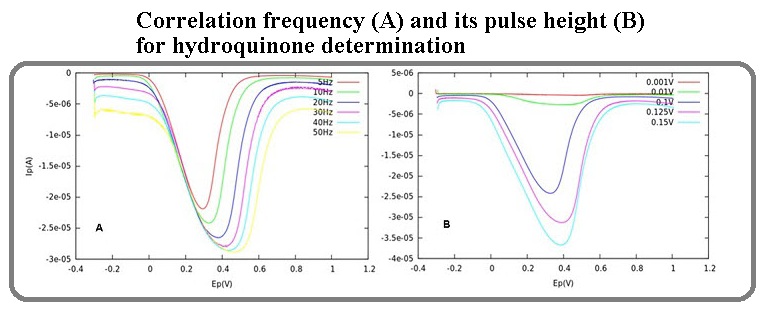Determination of Hydroquinone in a Square Wave Voltammetry based on Screen Printed Carbon Electrode
Abstract

References
Hu, X., Lin J., dan Wang, J., Electrochem. Commun., 2012, 21, 73-76 [2] Hong, Z., Zhou L., Li J., dan Tang J., Electrochim. Acta, 2013,109, 671-677 [3] T. C. Tsai and B. M. Hantash, Clinical Medicine: Dermatology, 2008, 1, 1-20 [4] Peraturan Kepala Badan Pengawas Obat dan Makanan, 2011, Persyaratan Teknis Bahan Kosmetika. Accessed in 20 October 2014 from http://notifkos.pom.go.id/bpom-notifikasi/document_peraturan/HK.03.1.23.08.11.07517%20TAHUN%202011%20tentang%20Persyaratan%20Teknis%20Bahan%20Kosmetika.pdf [5] Zhao D., Zhang X., Feng L., Jia L., dan Wang S., Colloids Surf. B: Biointerfaces, 2009, 74, 317-321 [6] Hu, S., Wang Y., Wang X., Xu Li., Xiang J., dan Sun W., Sensor Actuat. B-Chem., 2012, 168, 27-33 [7] Cervini P., dan Cavalheiro, E. T. G., Eclet. Quim., 2006, 31, 59-62 [8] Zhou, X., He Z., Lian Q., Li Z., Jiang H., dan Lu X., Sensor Actuat. B-Chem., 2014, 193, 198-204 [9] Mirceski V., and Gulaboski, R., Maced. J. Chem. Chem. Eng., 2014, 33, 1-12 [10] Wang, J., Analytical Electrochemistry, 3rd ed., 2006, John Wiley & Sons, Inc., USA
Refbacks
- There are currently no refbacks.









